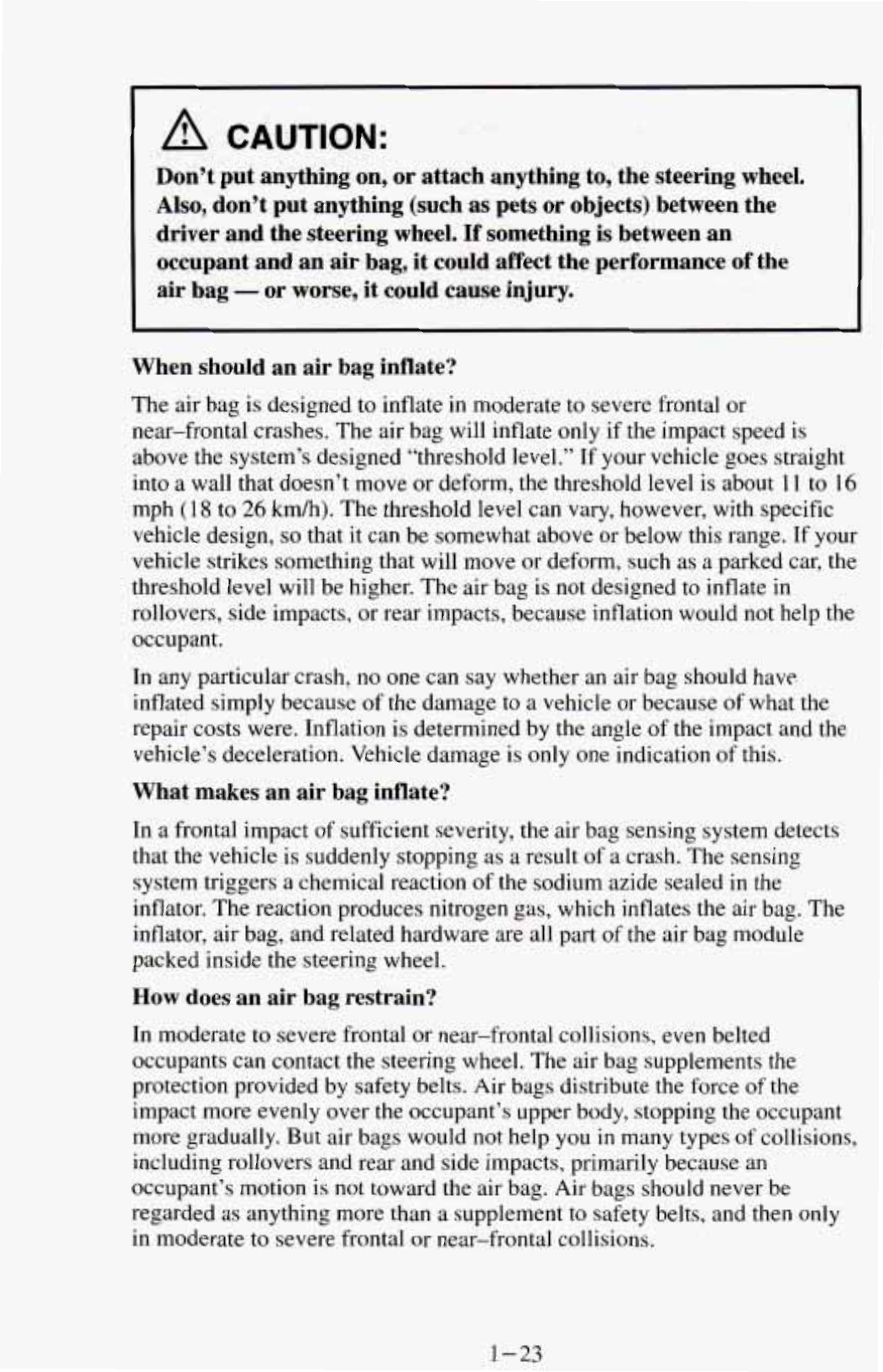
A
CAUTION:
Don’t put anything
on,
or attach anything to, the steering wheel.
Also, don’t put anything (such
as
pets or objects) between the
driver and the steering wheel. If something is between an
occupant
and
an air bag, it could affect the performance of the
air bag
-
or worse, it could cause injury.
When should an air bag inflate?
The air bag
is
designed
to
inflate
in
moderate to severe frontal or
near-frontal crashes. The air bag will inflate
only
if the impact speed is
above the system’s designed “threshold level.” If your vehicle goes straight
into a wall that doesn’t move or deform, the threshold level is about
11
to
16
mph
(1
8
to
26
kdh).
The
threshold level can vary, however, with specific
vehicle design,
so
that it can be somewhat above or below this range. If your
vehicle strikes something that will move or deform, such as a parked car, the
threshold level will be higher.
The
air bag is not designed
to
inflate in
rollovers, side impacts, or rear impacts, because inflation would not help
the
occupant.
In any particular crash,
no
one can say whether an air bag should have.
inflated simply because of the damage to a vehicle or because
of
what the
repair costs were. Inflation is determined by
the
angle
of
the impact and the
vehicle’s deceleration. Vehicle damage is
only
one indication
of
this.
What makes an air bag inflate?
In a frontal impact of sufficient severity, the air bag sensing system detects
that the vehicle
is
suddenly stopping as a result of a crash. The sensing
system triggers a chemical reaction of the sodium azide sealed in the
inflator. The reaction produces nitrogen gas, which inflates
the
air bag.
The
inflator, air bag, and related hardware are all part of the air bag module
packed inside the steering wheel.
How
does an air bag restrain?
In moderate
to
severe frontal or near-frontal collisions, even belted
occupants can contact the steering wheel.
The
air bag supplements the
protection provided by safety belts. Air bags distribute the force
of
the
impact more evenly over the occupant’s upper body, stopping the occupant
more gradually.
But
air bags would not help
you
in
many types of collisions,
including rollovers and rear and side impacts, primarily because an
occupant’s motion is
not
toward the air bag. Air bags should never be
regarded as anything more than a supplement
to
safety belts, and then
only
in moderate to severe frontal or near-frontal collisions.
1-23


















